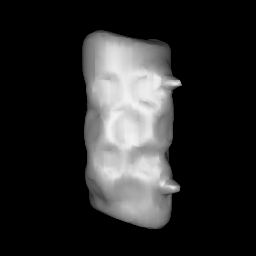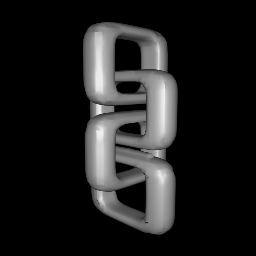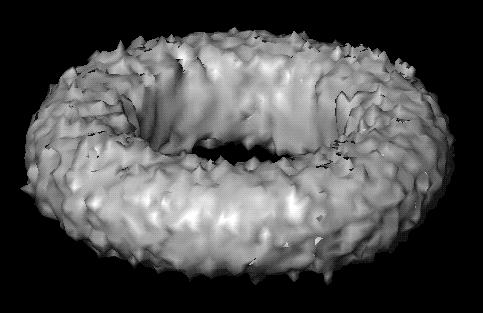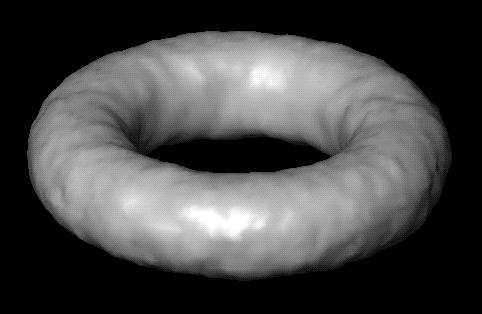Examples
The following graphical examples illustrate several possible uses
of level sets in Computer Vision and Computer Graphics.
Morphing
This is an example of using level sets to morph one object into
another. The level-set model of a mug deforms into that of a chain by
moving on the distance transform of the chain. Changes in topology are
handled automatically by the voxel-based formulation.






Fillets and Blends
Level sets moving under positive-curvature flow can be used to construct
fillets or blends. No explicit knowledge of the shapes of the
underlying models is necessary. The algorithm can be applied to objects
of arbitrary complexity and topology.




Coarse-to-fine Strategy
The coarse-to-fine strategy for fitting level-set models is
shown here. Successively finer models are used, the resolution is doubled
from one image to the next, allowing a more detailed reconstruction to be
obtained. The models move according to an energy functional which seeks to
maximize the posterior probability of surface position.



Evolution of the Level Set Model
The initial model of a torus from the combination of six points of view is
displayed at left. The model is attracted to the range data, undergoes
internal forces, evolves, and eventually settles into a smooth steady state.




Contact amangan@utk.edu





















